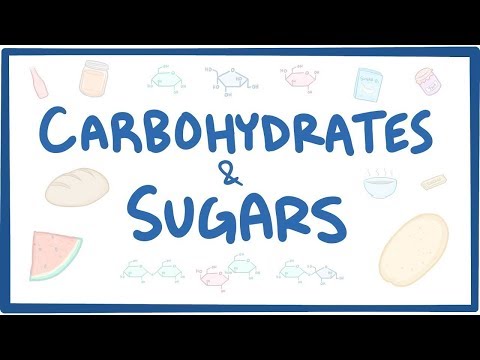This is the third installment of a new video series in partnership with Osmosis, a group that focuses on health science education, highlighting the basics of several nutrition topics. Click here to watch the video on carbs and sugars.
Click here to watch the first video in the series, “Fundamentals of Fats”. Click here to watch the second video in the series, “Hydration: It’s a Fluid Situation”.
Carbohydrates play many roles in our diet. They provide us with energy, sweeten lemonade, balance out an acidic miso soup, fuel yeast in rising dough and alcohol, and help preserve jams and jellies. Carbohydrates consist of both simple sugars, which are little ring-shaped molecules made of carbon, hydrogen and oxygen, as well as more complex carbohydrates, which are formed when simple sugars link up together to make long chains. Sugars are found naturally in plants like fruits, vegetables and grains, as well as animal products like milk and cheese. Added sugars are the sugars that get added as an ingredient when making foods like cereals, ketchup, energy bars and salad dressings. Even if the sugar being added comes from a natural source like sugar cane or honey, it’s still considered an added sugar.
The word “sugar” actually refers to a family of molecules called saccharides. Monosaccharides are made up of one sugar molecule, disaccharides have two sugars linked together, oligosaccharides have three to nine, and polysaccharides are made up of ten or more sugar molecules. Of all of these, glucose (a monosaccharide) is the most important member of the sugar family. It’s one of the main sources of calories for the body, and is able to cross the blood brain-barrier and nourish the brain. Fructose and galactose round out the three most common monosaccharides, and they’re usually found linked with glucose in the form of a disaccharide. Sucrose, or table sugar, is formed when fructose links up with glucose. Sucrose is found in various fruits and vegetables, with sugarcane and sugar beets having the highest quantities. Galactose is typically linked to glucose to form lactose, a disaccharide found in the milk of mammals. Maltose, a disaccharide found in molasses, is made of two glucose molecules.
Next up, let’s talk about the more complex carbohydrates. Oligosaccharides are found in many plants, but usually only in small quantities. Polysaccharides (the long-chain carbohydrates) are the most abundant type of carbohydrates found in food. Starches are polysaccharides that human intestinal enzymes can break down. They’re found in foods like rice, potatoes, wheat and maize (corn) and are an important source of calories. Starches don’t taste sweet like simple sugars because they don’t activate taste buds in the same way.
Dietary fibers are types of carbohydrates that our intestinal enzymes can’t break down. Instead of being digested in the gastrointestinal tract, they pass through the small intestine intact, get broken down a bit by bacteria in the large intestine, and ultimately end up as bulk matter in the stool. There are many different types of dietary fibers and they differ when it comes to structure and specific impact on health. Some of the critical roles that fibers play include slowing down the rate of absorption of simple sugars in the small intestine (which can help maintain healthy blood glucose levels) and increasing stool weight (helping to prevent constipation). Fibers like beta-glucan are also good for heart health.
The National Academies of Sciences, Engineering, and Medicine recommend getting 45 percent to 65 percent of your total calories from carbohydrates, including 14 grams of fiber for every 1,000 calories. So, for example, if you need 2,000 calories every day to maintain your weight, you should aim to eat 28 grams of fiber as part of the 900 to 1,300 calories you consume from carbohydrates. When it comes to added sugars, both the World Health Organization and the U.S. Dietary Guidelines recommend that they make up less than 10 percent of total calories, or less than 200 calories from added sugars in a 2,000-calorie diet. The number of calories you need to maintain your weight depends on things like your age, sex, height, weight and activity level.
Eating a healthy diet means choosing foods that are as nutrient-rich as possible. Foods that contain fiber, starch and natural sugars like fruits and vegetables tend to be richer in nutrients than those with added sugars. Americans consume more added sugars than is recommended. By reading nutrition labels, you can compare the nutrition content of foods and choose more nutrient-rich options. Generally speaking, picking foods and beverages that are higher in nutrients like fiber and lower in added sugars is best.
If you have questions about nutrition, reading nutrition facts labels or need help finding a healthy eating pattern that works for you, consult a registered dietitian in your area or ask your doctor to refer you to one.
This blog includes contributions from Allison Webster, PhD, RD.

